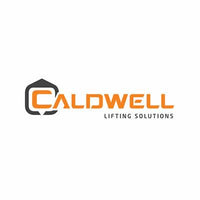FAQs
1. What is the reel lifter’s capacity?
500-lb. to 11,000-lb.
2. What standards are relevant when using the reel lifter?
The product conforms to ASME B30.20 BTH-1 Design Category B, Service Class 0. It can be rigged beneath the hook of practically any crane or hoist, within reason.
3. Can I use the reel lifter outside?
Yes. The origins of the reel lifter are in the utilities sector, where the first prototype was tested.
4. Do I need to inspect the reel lifter when it is delivered?
Yes. It is important to thoroughly inspect all equipment before placing it into service because of excessive vibrations, temperature changes, and possible mishandling during shipment. Upon arrival, a qualified person shall inspect the following before initial use: overall unit for signs of damage or missing parts; all fasteners (nuts, bolts, etc.) for tightness; the unit for proper lubrication.
5. Do I need to lubricate my reel lifter?
Yes. Establish a regular, lubrication schedule based upon severity of use and environmental conditions. Always keep the lifter free from debris and well lubricated: lubricate the reel lifter weekly, or as needed, depending on severity of use and environmental conditions, maintaining bail rotation. Lubrication is essential for maximum service and reliability.
6. How do I use the reel lifter for vertical lifting?
Before inserting the reel lifter into the reel, verify the lift bar has ample clearance for 90-degree lift bar rotation, clearing the drum walls and tie rods. Once the lift bar rotates 90 degrees to horizontal (slowly) hoist the reel lifter up until the lift bar's top surface is flush with the reel’s top, inside flange face. Attach the reel lifter to a hoist, making sure the hoist’s rated capacity is equal to or greater than the combined weight of the lifter and load. Insert the reel lifter through the reel’s arbor hole diameter. Keep lowering the reel lifter, making sure the lift bar clears the top, inside flange face. Once the lift bar has cleared the flange, pull the lanyard upward, rotating the lift bar from vertical to horizontal. Pull the lifter upwards until the lift bar is horizontally flush with the bottom flange face. Before hoisting the loaded lifter, ensure all adjustments are correct and secure.
7. Can I perform upending reel operations with the standard reel lifter?
Yes, but the steps to follow are slightly different to above, after inserting the reel lifter through the reel’s arbor hole diameter.
8. How do I remove the reel lifter once used?
Lower the reel lifter into the drum, creating clearance between the horizontal lift bar and the top, inner flange face. With slack in the hoist line, the arm rotates 90 degrees horizontal to vertical (home position). Using a vertical pull (slowly) hoist the reel lifter out of the reel.
9. Do I need to inspect and maintain my reel lifter?
Yes. Establish a regular, inspection and maintenance schedule, based upon severity of use and environmental conditions.
10. Can I use the reel lifter to lift other items?
We don’t recommend that any of our products are used for other than their intended purpose. Always consult the manufacturer if you have any doubt about the suitability of a product to perform the task at hand.



